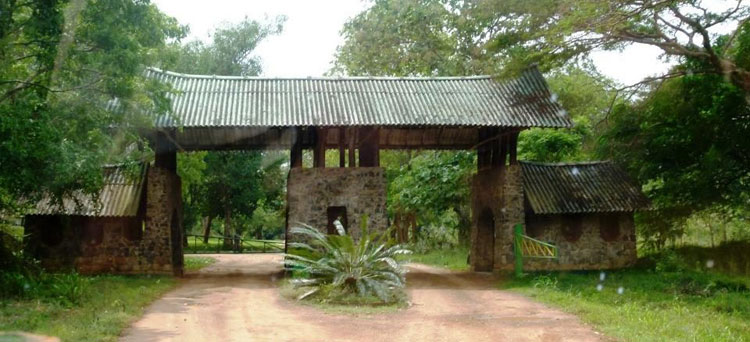 It’s back to Sri Lanka after my Russian winter, and what better way to reintroduce myself to my second adopted home than immediately going on safari? Wilpattu National Park is in the North-West of the island, an area I haven’t been before. The Park is renowned for its diverse landscape, which includes over 60 lakes, also making it ideal for birdwatching, and especially during the migratory season. Its also famous for Leopard, having the highest concentration of Leopard in the world.
It’s back to Sri Lanka after my Russian winter, and what better way to reintroduce myself to my second adopted home than immediately going on safari? Wilpattu National Park is in the North-West of the island, an area I haven’t been before. The Park is renowned for its diverse landscape, which includes over 60 lakes, also making it ideal for birdwatching, and especially during the migratory season. Its also famous for Leopard, having the highest concentration of Leopard in the world.
Although I’ve been on safari many times in Sri Lanka over the years, I’ve never seen Leopard. This is partly because I don’t want to have anything to do with the tourists charging around in jeeps trying desperately to see one, although I know the strategy works. With all the noise and cars and photos I am sure it both stresses the animal out – they are highly endangered after all – and creates an immediately artificial environment of photo lenses, revving engines, clouds or dust and a backdrop of eager tourists all excited and snapping away.  I prefer to bide my time, and allow the Leopard to reveal itself to me in its own time, and in a more natural manner, respectful and more befitting of the natural environment.
First however, as we arrive and get started on our evening dinner ready to have an early night to get up at dawn the next morning, I am visited by the extraordinary Rhinosaurus Beetle, who flies in and crash lands on the tablecloth. It is a good omen for an exciting day ahead as he scuttles towards the Chapatis.

The next morning is bright, and at almost each turn I spot something. The main larger species quickly get ticked off, ranging from Wild Water Buffalo, whose calm outward demeanour, off hand cud-chewing and almost exact resemblance to domestic Buffalo disguise the fact these are in fact short tempered and violent animals that can kill. You don’t want to get too close because they will charge and those horns can do serious damage. Not even large Crocodiles will take on one of these animals.
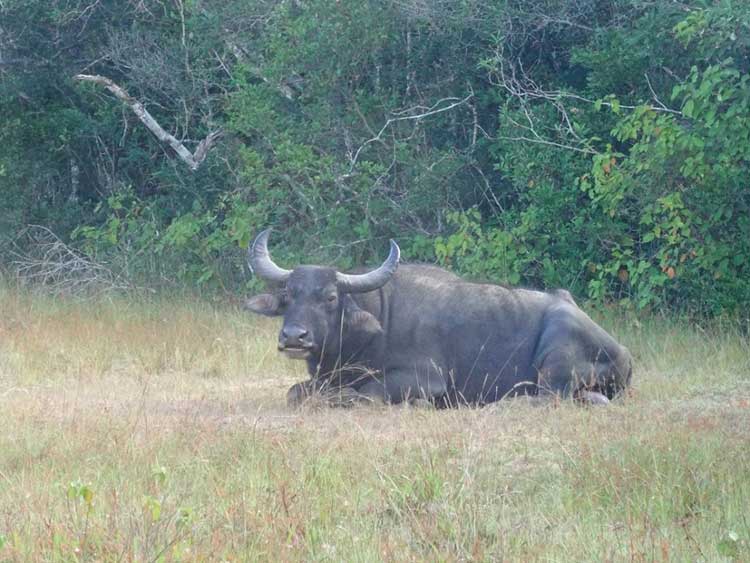
From there we spot early morning Spotted Deer, out in the sun but later to retreat into the Jungle canopy for shelter. These are primary prey for Leopard.

There are also Wild Boar about, with this handsome male also capable of killing anyone that ventured too close. Those tusks are razor sharp, and every year there are fatalities among the locals who (illegally) try hunting them.
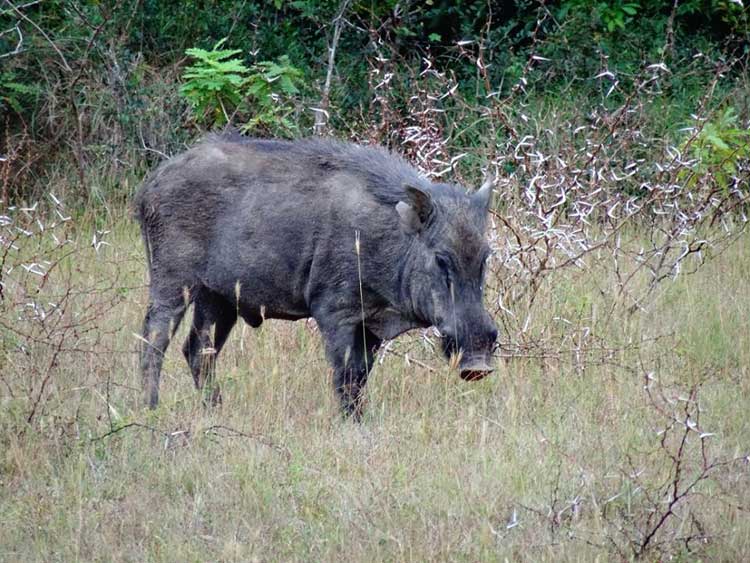
Up above in the tree canopy, I hear a familiar cry. Langurs! These are Purple Faced Green Leaf Langurs, and as regular readers of this blog will know, I also have a troop of them in my garden down south, at Unawatuna, having on one occasion to rescue one that damaged himself as he fell out of a tree. I know there are four distinct populations of this rare monkey scattered about Sri Lanka, with colour variants distinguishing them. Indeed, these appear rather more pale than the ones I have down south, and it is always a thrill to see them leaping across from tree to tree.

From here things start to get more scary. Just by a water hole as I pass by is a huge Rat Snake. It’s not venomous, but could still give a nasty bite if provoked. Its best to steer clear of these animals.

Then, as we move on to examine one of the lakes, a slight ripple betrays the presence of a top end predator. This is a large Mugger Crocodile, and is about nine feet in length. It is more than capable of attacking a human, let alone the Deer and Buffalo calves it will also take.
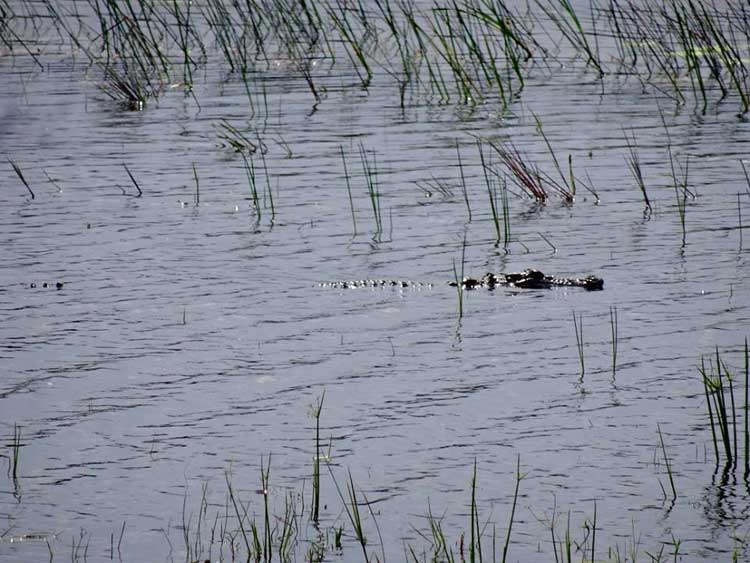
Also down by the waters edge appears a Brown Jackal. These are quite rare animals, and fit the gap left by Wolves, which don’t exist in Sri Lanka,  in the local eco-system. They are opportunistic hunters, eating carrion, but will also relentlessly stalk young wild boar piglets. I once saw one following behind a Sow Boar and her eight Piglets at dusk over a period of several nights. The Jackal followed, and every so often would nip in and try to attack. The Sow would turn around and chase him off, but the Jackal would immediately return. He would make an attempt every five-ten minutes, and each time the Sow would respond. That must have been immensely wearing on the Mother, and so it proved to be. The next evening I saw them, there were seven piglets. The Jackal kept on following. And so it went on, this relentless game of Jackal and Sow, day after day, night after night, until she was left with just two.
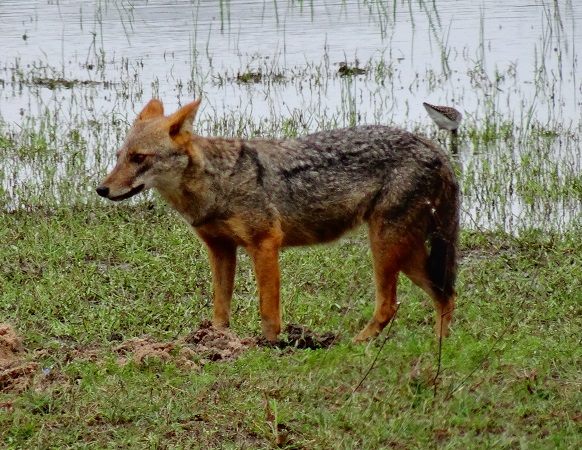
Then, as we slowly drive around the waters edge, and pass by a large bush, a loud trumpeting is heard. Its a huge Bull Elephant, and he’s telling us to back off and beware.  We retreat. He’s been washing in the Lake, and is both proud and sexually excited – his massive penis dangling between his legs. He ambles across the road and into the bush. This is another animal that if one gets to close could kill – a swipe of his trunk across your head, or a quick trample for upsetting him and you’re done. They are also known to take on and charge vehicles, and with us inside it I don’t fancy our chances, and neither does the driver. We remain a respectful, non aggressive distance away as the King of the Jungle walks by. His communicating with us was a generous signal that he was not to be messed with and we should know our place.
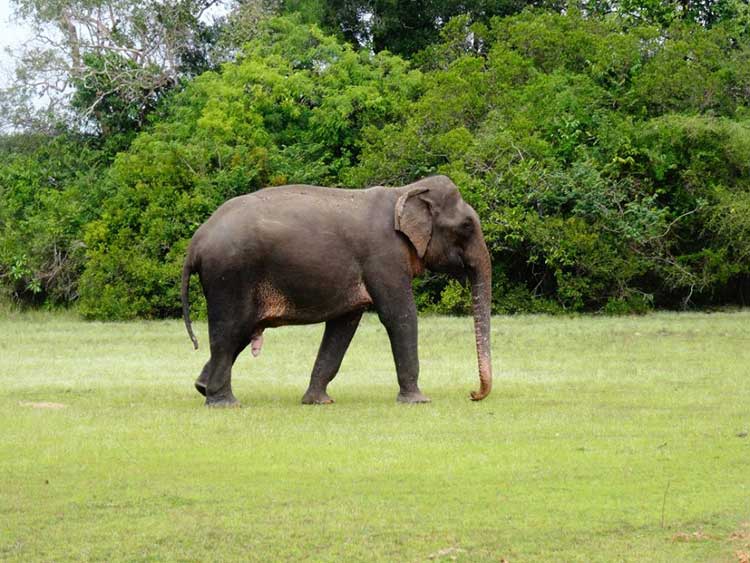
Alas, as the day goes on, there are no Leopard. We need to be out of the Park by 6pm and it is 5:45. There will always be another day. But as we slowly drive back to the main gate, as we turn around a corner, the driver suddenly stamps on the brakes. There, right ahead, is the most magnificent Leopard. My patience has been rewarded, and I am able to observe him, in perfect peace and quiet for the next 15 minutes, until he too, eventually decides to leave. As soon as he walks into the undergrowth, he disappears, wraith like. The Leopard; spirit of the Jungle.
